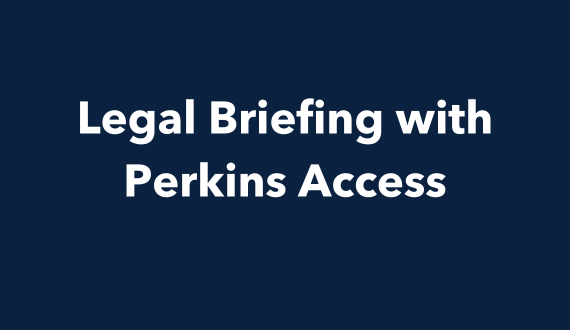Do accessibility overlays work?
Share

We’re going to give it to you straight: accessibility overlays are too good to be true. But don’t be discouraged. That doesn’t mean accessibility isn’t achievable or worth the effort.
We dive into everything you need to know about overlays — from how they work (or often don’t work) — to what the disability community thinks and, most importantly, proven approaches to achieving accessibility.
What are accessibility overlays?
Accessibility overlays have received a lot of buzz recently. These software solutions are designed to fix accessibility issues on websites and are marketed to companies as a way to quickly and inexpensively achieve ADA compliance and avoid lawsuits.
Some overlays, which take the form of toolbars or widgets, allow website visitors to make minor adjustments like text size, contrast or color to improve the accessibility of the site they’re on, based on their individual needs.
The other type of overlay offers on-the-fly detection and repair of accessibility issues. These tools, which work behind the scenes and aren’t visible to users, identify errors like missing alt-text for images, or missing labels on buttons or fields, and automatically remediate them in real time while the page loads.
With accessibility lawsuits on the rise and public awareness around disability inclusion growing, it’s not surprising that businesses are tempted by the quick-fix promise of overlays.
Unfortunately, like most “quick-fix” solutions, they’re not all they’re cracked up to be. In fact, there has been major backlash against overlays from the disability community, with some assistive technology users employing ad-blockers to avoid overlays altogether. Numerous disability advocates have spoken out against overlays doing more harm than good, and more than 700 accessibility professionals and people with disabilities have signed an open letter condemning their use.
Why accessibility overlays don’t work:
They can’t get you to 100% compliance.
Regardless of what they claim, overlays simply can’t bring a website into full ADA compliance or ensure that it meets all WCAG requirements. Forbes sums up overlays as “bit-part solutions capable of no more than automatically patching scattered elements of accessibility issues here and there.”
And according to recent research from Forrester, overlays can only detect and resolve about 50% of accessibility defects — and often less. It follows, therefore, that using overlays can’t eliminate legal risk. In 2020 alone, more than 250 companies using overlays were the subject of web accessibility lawsuits.
They often “solve” problems that don’t exist — and also cause new ones.
Most users with disabilities already have solutions for making the adjustments that toolbar overlays offer. They may use the built-in accessibility features of their device to set type size, contrast, and other preferences and/or they use accessibility devices or software. In fact, overlays can actually interfere with accessibility devices, creating more barriers for people with disabilities rather than fewer.
They raise privacy issues.
Information about a person’s abilities — whether they’re disabled, what their disability is — is private, and shouldn’t be shared without consent. Yet some back-end overlays automatically detect when assistive technology is being run, exposing the fact that the user has a disability. Some overlay widgets, meanwhile, capture the settings a user chooses, and then those settings “follow” the user to other sites with the same widget, whether the user wants them to or not. Again, when this is done without the user’s consent, it’s a breach of privacy.
Accessibility overlays don’t improve access.
But the biggest issue of all, overlay critics argue — and we at Perkins Access agree — is that overlays don’t adequately improve access or remove barriers for people with disabilities. Employing an overlay on your site may actually exclude users with disabilities from having access, which is counterintuitive and can send the wrong message to your customers.
How to get accessibility right
Accessibility overlays may be “too good to be true,” but it doesn’t mean accessibility isn’t achievable or worth the effort. To truly meet the needs of people with disabilities, and minimize their vulnerability to lawsuits, companies need to bake accessibility into their website design, development, and maintenance. It’s easier than you think, but it does take expertise.
From decades of experience supporting accessibility at top organizations, we’ve found the best approach is to start with a clear assessment of your position along a continuum of digital accessibility. We can help.
We deliver actionable, measurable recommendations to our clients and develop a customized blueprint to help position them for success. Our support throughout the entire process, with strategic consulting and hands-on technical assistance, helps our partners deliver on their blueprint .
Talk to one of our experts to learn how Perkins Access can help you not only make your website or other digital experiences accessible, but also integrate accessibility throughout your digital culture in a long-term, sustainable way.




